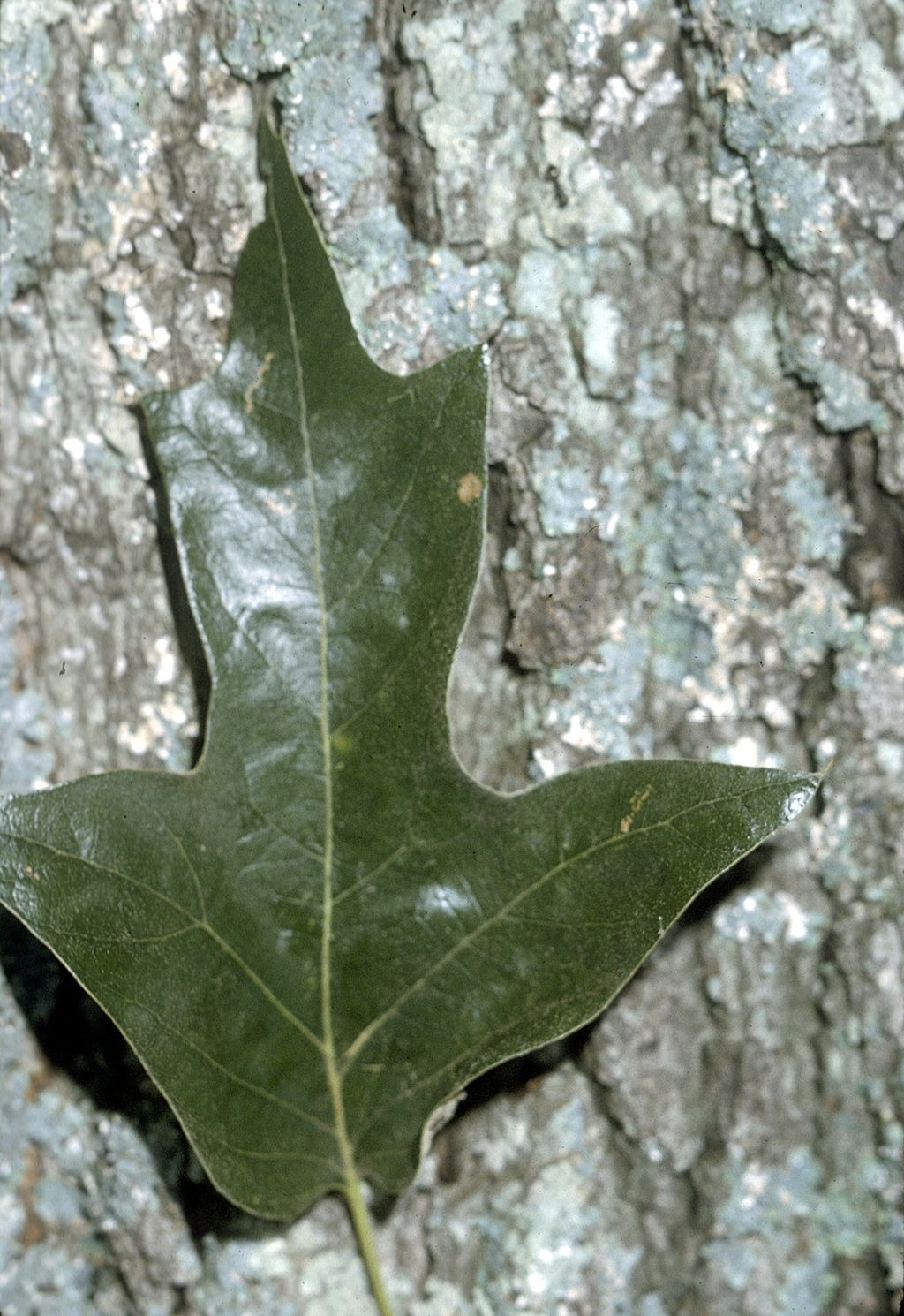Southern Red Oak
No. in Woodland Park: 1
No. in good health: 0
No. in fair health: 0
No. in poor health: 1
Quercus falcata, commonly known as the southern red oak or Spanish oak, is a tree in the red oak section (Lobatae) of the genus Quercus native to the southeastern United States.
It is a medium-sized deciduous tree reaching 25–30 m tall, rarely 35–38 m (forest grown specimens on highly productive sites), with a trunk up to 11⁄2 meters in diameter, the crown with a broad, round-topped head. The leaves are 10–30 cm long and 6–16 cm wide, with 3 to 5 sharply pointed, often curved, bristle-tipped lobes, the central lobe long and narrow; the small number of long, narrow lobes is diagnostic, readily distinguishing Southern Red Oak from other red oaks. The base of the leaf is distinctly rounded into an inverted bell shape and often lopsided. They are dark green and shiny above, and rusty and hairy below, particularly along the midrib and veins. The seed is a short acorn 9–16 mm long, bright orange-brown, enclosed for one-third to half of its length in a flat cup. The acorn matures at the end of its second season. The bark is dark brownish gray with narrow, shallow ridges.
Southern red oak has been reported to form occasional hybrids with several other red oaks in the region.


